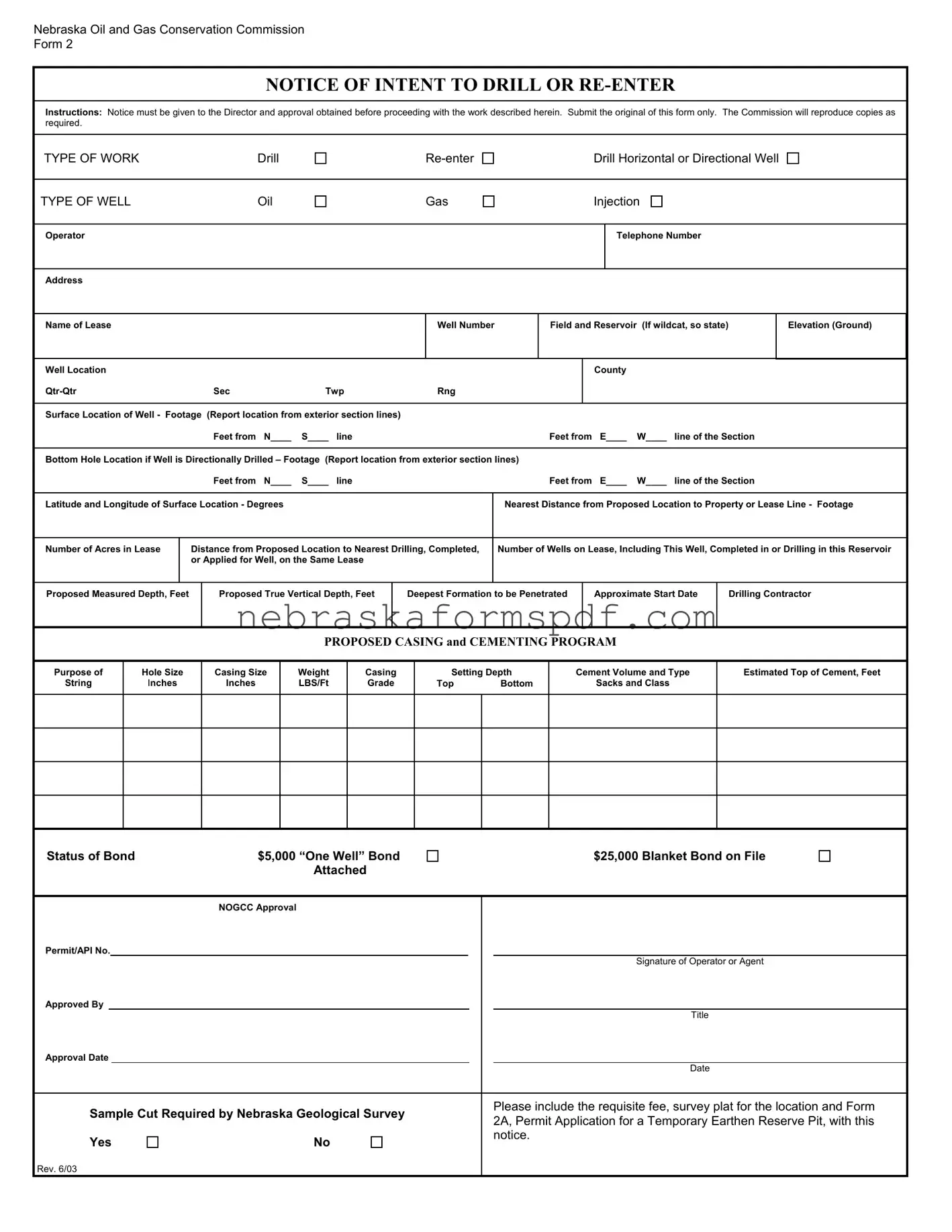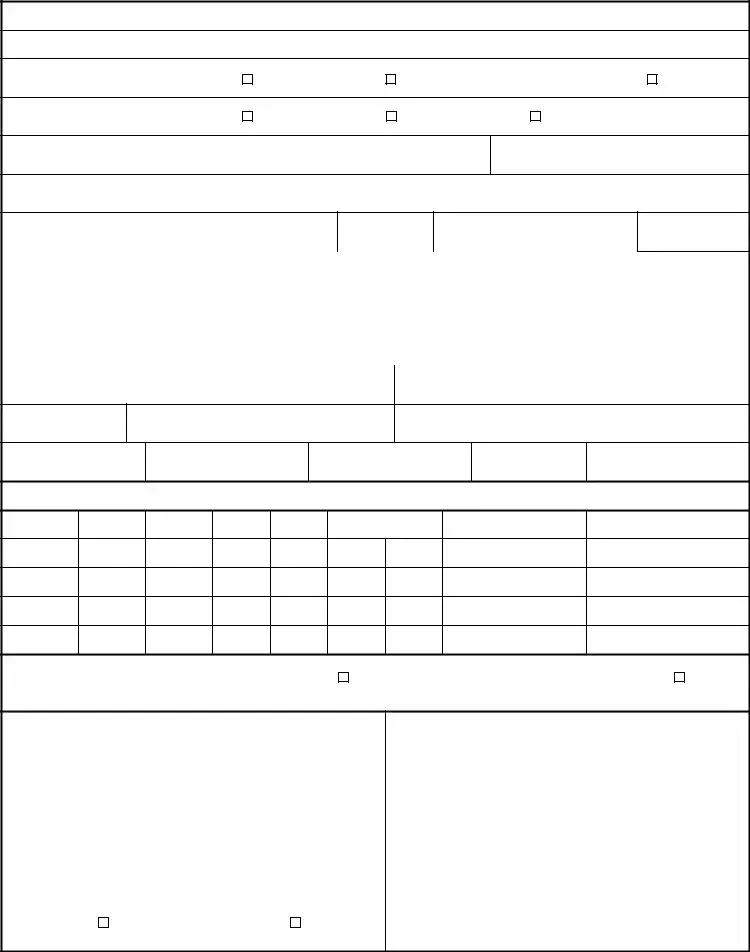FAQs on Nebraska Form 2: Notice of Intent to Drill or Re-Enter
The Nebraska 2 Form, officially known as the Notice of Intent to Drill or Re-Enter, is a document required by the Nebraska Oil and Gas Conservation Commission. It serves as a formal notification to the Director and must be approved before beginning any drilling or re-entry operations. This includes drilling new wells, re-entering inactive wells, and drilling horizontal or directional wells for oil, gas, or injection purposes.
Any operator planning to drill or re-enter a well for oil, gas, or injection in the state of Nebraska must submit the Nebraska 2 Form. It is a mandatory prerequisite for obtaining the necessary authorization from the Nebraska Oil and Gas Conservation Commission to proceed with the described work.
The form requires detailed information about the proposed drilling or re-entry operation, including:
-
Type of work (Drill, Re-enter, Drill Horizontal or Directional Well)
-
Type of well (Oil, Gas, Injection)
-
Operator contact information
-
Lease and well details
-
Well location coordinates and proximities
-
Details on the proposed casing and cementing program
-
Estimated start date and drilling contractor information
Additionally, the status of the operator’s bond and the necessity for a survey plat and Form 2A for a Temporary Earthen Reserve Pit are also covered.
Yes, operators are required to include the requisite fee when submitting the Nebraska 2 Form. The specific amount is not stated within the instructions, so it's advisable to contact the Nebraska Oil and Gas Conservation Commission directly for the current fee structure.
The instructions specify that only the original form should be submitted to the Commission, which will then reproduce copies as required. It implies that the form should be mailed or delivered in person to the commission's office. Including additional documentation such as the survey plat for the location and Form 2A is also required if applicable.
After the form is submitted, it undergoes a review process by the Nebraska Oil and Gas Conservation Commission. If approved, the operator receives a permit/API number signifying authorization to commence the described drilling or re-entry operations. This permit must be obtained before starting any work. Additionally, the approval process might require the submission of a sample cut to the Nebraska Geological Survey, as indicated on the form.
The form mentions two types of bonds: a $5,000 “One Well” Bond and a $25,000 Blanket Bond. These are financial sureties that operators must have on file with the Commission before drilling activities can begin. The "One Well" Bond applies to a single drilling operation, whereas the "Blanket Bond" covers multiple operations by the same operator across different sites. The bond ensures compliance with regulations and safeguards against potential environmental impacts.

